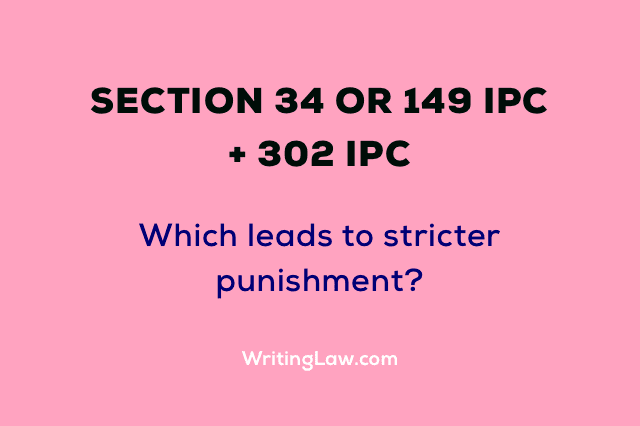
Section 34 and section 149 of the Indian Penal Code are substantive in nature as they do not provide any punishment.
Understanding Section 34 IPC
Section 34 of the IPC talks of acts done by two or more persons in furtherance of common intention. Each person will be liable for the offence committed. It is immaterial what role a person is playing in the act. It can be the primary or main act, or it can be an auxiliary or secondary act. Even if a person stands at the door so that an offence can take place, he is liable.
Understanding Section 149 IPC
Section 149 of the IPC says that every member of the unlawful assembly will be held guilty for the offence committed in the prosecution of a common object. It is not necessary for all members to actively participate in the crime. Even if a single individual commits the offence, all will be held liable for being a member of an unlawful assembly.
Which one is Graver? Section 302/34 or Section 302/149
Law students, out of inquisitiveness, ask about the gravity of these sections when reading with section 302 of IPC (murder). They wonder which of these leads to stricter punishment.
It depends upon what offence is done as they both are not providing punishment but imputing punishment on those who did not do the grave offence. But because they share a common intention or common object, they are being held liable. So, the harshness of the punishment depends from case to case and fact to fact.
- 18 Most Important Amendments to the Indian Constitution - 12th August 2023
- 8 Kinds and Theories of Punishment - 22nd July 2023
- What Is the Meaning of Res Judicata in Civil Procedure Code? - 22nd January 2023







